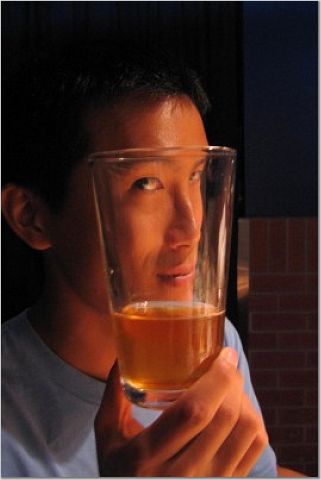Faking it as a priest in Japan
Faking it as a priest in Japan
Mark Kelly is originally from Lancashire in England. He has been living in Japan for six years and, at the weekend, he is a fake priest. 
"I was living in Sapporo, studying Japanese, and I needed the money. It's far better paid than teaching in a language school," he said.
"Being a fake priest is big business in Japan - I've done a TV commercial for one company," he added. "In Sapporo, there are five agencies employing about 20 fake priests. In a city like Tokyo, there must be hundreds."
The fake Western priests are employed at Western-style weddings to give a performance and add to the atmosphere. These are not legal ceremonies - the couples also have to make a trip to the local registrar.
"In the past almost all weddings in Japan were Shinto, but in the last few years Western-style weddings have appeared and become very popular," said one Japanese priest.
"People like the dress, the kiss and the image. Japanese Christians make up only 1% of the country, but now about 90% of weddings are in the Christian style." ![]()
![]() It is important for the bride and groom to have a proper wedding, and they are not getting it from these foreign priests
It is important for the bride and groom to have a proper wedding, and they are not getting it from these foreign priests ![]()
"At the hotel where I work, there is a Christian chapel next to a Shinto chapel. The Christian chapel is always in use, but the Shinto chapel is being used as a storeroom," Mr Kelly said.
The fake Western priests are used to create an authentic Christian feel.
"There are Japanese priests, but most couples are trying to re-create a European wedding, so overwhelmingly ask for a foreign priest," said Momo, who works at Morito Ishi Kyokai (forest and stone) chapel.
Supermarket chic
Western-style chapels are often found in unexpected places.
Morito Ishi Kyokai is on the sixth floor of a supermarket in Sapporo.
As you walk between sushi restaurants, cake shops and noodle bars, a grey plastic stone grotto decked in plastic flowers and fairy lights suddenly appears.
There are plastic cherubs and little fountains inside. 
"It is designed in the style of mid-century stone churches in Europe," said Momo.
Mr Kelly worked at the chapel when it first opened.
"Because it was in a shopping centre, you got the sounds of vegetables on special offer," he said.
"It's very popular because it's still new," added Momo.
Omi Junko plays the flute in a club and comes to the chapel to practise.
"I like to come here. It has a good atmosphere because it is a church," she said.
Hazards of the job
The fake priests in Japan sometimes have to deal with difficult situations.
"Once I was holding a ceremony and an old man dressed head to toe in military uniform hobbled to the front and fell asleep," said Mr Kelly.
"Halfway through the service, he opened his eyes and I think he was back in Burma or Thailand. He looked straight at me, stood up and started unsheathing his rifle. Fortunately he was pretty slow and his relatives stopped him."
![]()
![]() Once, the bride vomited on me and then fainted. It wasn't very romantic
Once, the bride vomited on me and then fainted. It wasn't very romantic ![]()
Mr Kelly has often presided over ceremonies where the bride is pregnant.
"It is common. Once, the bride vomited on me and then fainted. It wasn't very romantic," he said.
Another difficulty is meeting genuine Japanese priests.
"We do occasionally bump into the real thing. They are very much against us, but there are not enough genuine Japanese priests to meet the demand" he said.
One Japanese Christian priest spoke out, but did not want to be identified.
"It is a real problem for us. They are not genuine and they give us a bad name," he said.
"It is important for the bride and groom to have a proper wedding, and they are not getting it from these foreign priests. I have even heard of hotels using staff when they can't find anyone else."
Omi Junko was surprised to find out that some of the Western priests were not genuine.
"I thought the priests were all real and I think everyone in Japan thinks that," she said.
But Mr Kelly argues that the ceremony is not about religion, but about image.
"I give a good performance. I use an Apache wedding prayer in my ceremony. It works very well, although I had to take out the part about the bear god in the sky," he said.
"If people are crying by the end of the wedding, I think I have done a good job."

0 Comments:
Post a Comment
<< Home